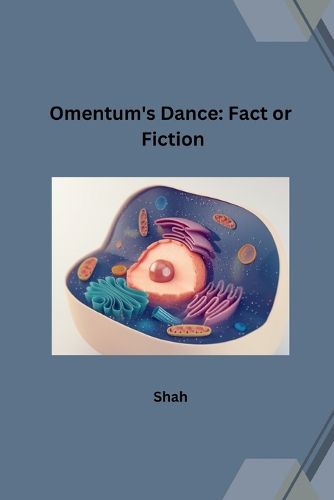Readings Newsletter
Become a Readings Member to make your shopping experience even easier.
Sign in or sign up for free!
You’re not far away from qualifying for FREE standard shipping within Australia
You’ve qualified for FREE standard shipping within Australia
The cart is loading…






The omentum, a fascinating structure within the abdomen, isn't just a fatty layer. It's a double-folded sheet of tissue called peritoneum, originating from the embryonic gut. There are two main omenta, each with unique roles: 1. Greater Omentum: This larger apron-like structure drapes over the intestines. It's composed of four peritoneal layers, rich in fat for energy storage and insulation. The omentum's mobility allows it to cushion organs and prevent them from sticking together. It also acts as an immune system warrior, containing white blood cells that fight infection. In some cases, it even wraps around inflamed organs, forming a protective barrier. 2. Lesser Omentum: This smaller, ligament-like structure connects the stomach and duodenum (upper small intestine) to the liver. It contains blood vessels, nerves, and bile ducts crucial for digestion. The lesser omentum acts like a highway, channeling these elements between organs. Across various species, the omentum's structure and function can differ slightly. In herbivores with complex digestive systems, the greater omentum might be larger to support bulky intestines. Conversely, carnivores with simpler digestive tracts may have a less prominent omentum. Overall, the omentum plays a vital role in abdominal health. It's a multifunctional marvel, providing support, insulation, immune defense, and a clear path for vital digestive processes.
$9.00 standard shipping within Australia
FREE standard shipping within Australia for orders over $100.00
Express & International shipping calculated at checkout
The omentum, a fascinating structure within the abdomen, isn't just a fatty layer. It's a double-folded sheet of tissue called peritoneum, originating from the embryonic gut. There are two main omenta, each with unique roles: 1. Greater Omentum: This larger apron-like structure drapes over the intestines. It's composed of four peritoneal layers, rich in fat for energy storage and insulation. The omentum's mobility allows it to cushion organs and prevent them from sticking together. It also acts as an immune system warrior, containing white blood cells that fight infection. In some cases, it even wraps around inflamed organs, forming a protective barrier. 2. Lesser Omentum: This smaller, ligament-like structure connects the stomach and duodenum (upper small intestine) to the liver. It contains blood vessels, nerves, and bile ducts crucial for digestion. The lesser omentum acts like a highway, channeling these elements between organs. Across various species, the omentum's structure and function can differ slightly. In herbivores with complex digestive systems, the greater omentum might be larger to support bulky intestines. Conversely, carnivores with simpler digestive tracts may have a less prominent omentum. Overall, the omentum plays a vital role in abdominal health. It's a multifunctional marvel, providing support, insulation, immune defense, and a clear path for vital digestive processes.